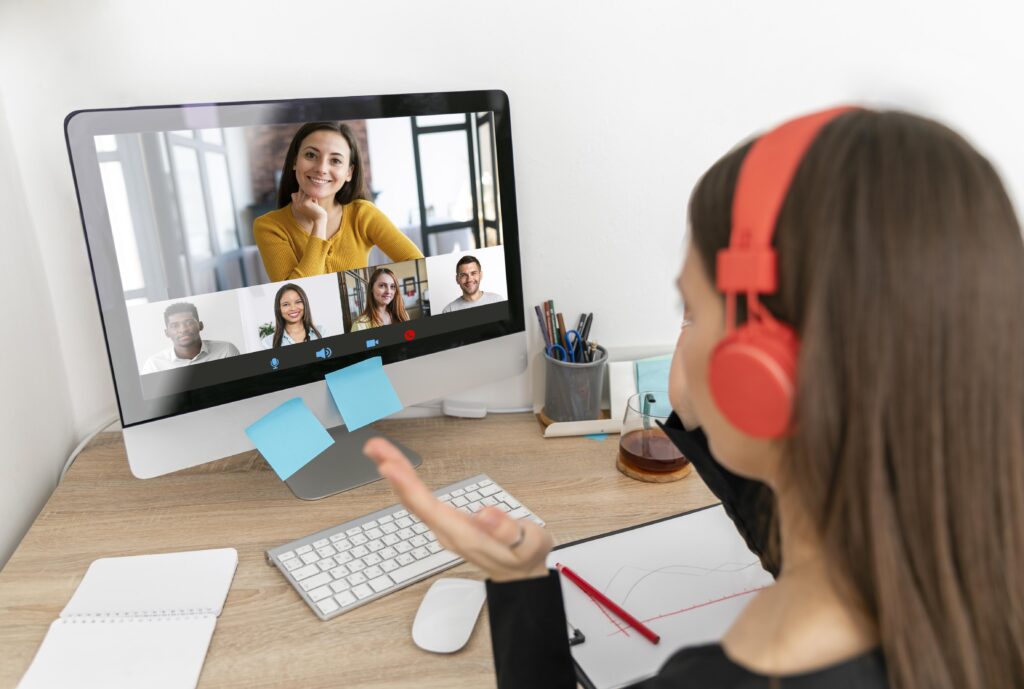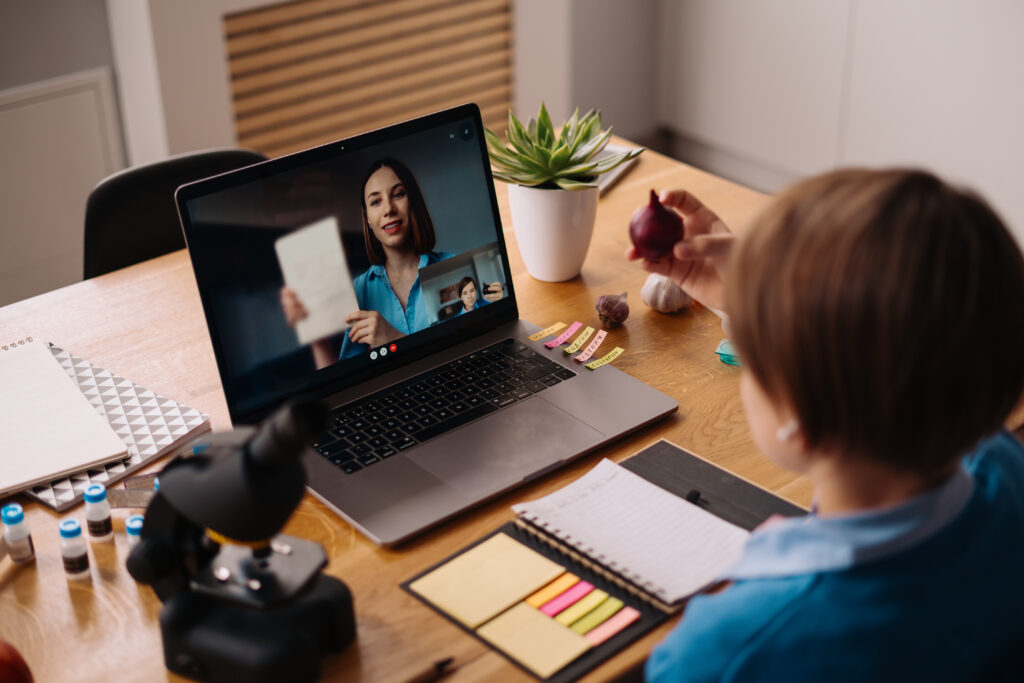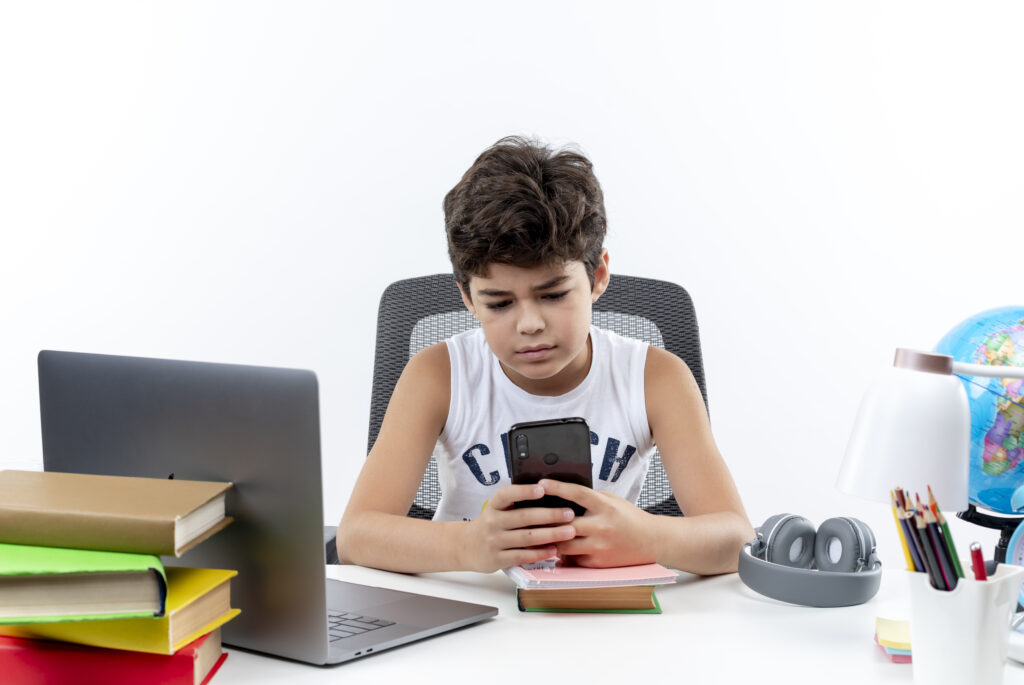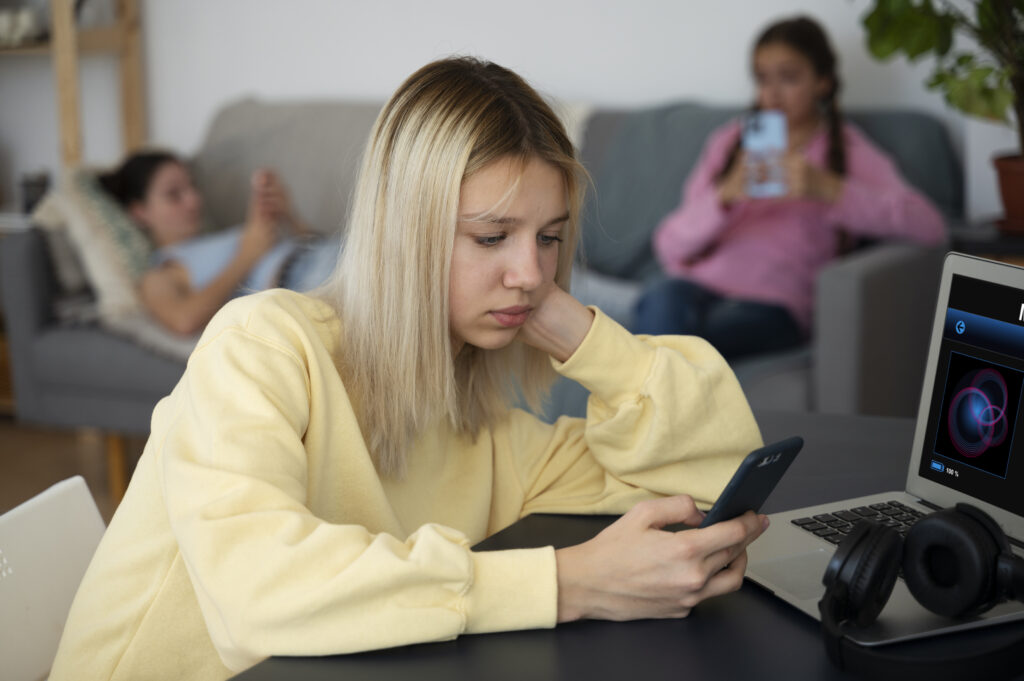In the contemporary landscape of education, the influence of social media has transformed the dynamics of learning, communication, and knowledge dissemination. The advent of various social media platforms has ushered in an era of unprecedented connectivity, offering students and educators an array of tools to facilitate engagement, collaboration, and information sharing. From virtual classrooms to online forums, the impact of social media on education has been profound, reshaping traditional learning paradigms and redefining the boundaries of the educational experience.
As students increasingly integrate social media into their academic pursuits, the educational landscape has undergone a remarkable shift, fostering a culture of interactive learning and digital collaboration. With the proliferation of information and communication technologies, students now have access to a wealth of educational resources and diverse perspectives, transcending geographical limitations and enhancing their learning opportunities.
However, amidst the myriad benefits, the pervasive influence of social media also presents a set of challenges, including distractions, information overload, and concerns regarding data privacy and digital ethics. Understanding the multifaceted impact of social media on education is crucial in navigating its complexities and harnessing its transformative potential to foster a dynamic and inclusive learning environment.

In this article we will introduce you to the Positive and negative effects of Social Media on Education and Learning. Through an insightful analysis of the benefits and drawbacks, we seek to foster a balanced perspective that acknowledges the transformative potential of social media while recognizing the critical considerations essential for creating a conducive and enriching educational environment.
Positive Impacts of Social Media on Education and Learning
In the digital age, the integration of social media into the educational landscape has brought forth a multitude of positive transformations, revolutionizing the way students engage with learning and knowledge sharing. From enhanced connectivity to the facilitation of global collaboration, the influence of social media on education has significantly expanded the horizons of traditional learning methodologies, fostering an environment that promotes dynamic and interactive academic experiences. Through various interactive platforms and accessible information channels, social media has emerged as a catalyst for empowering students and educators to explore new dimensions of learning, creativity, and collaborative engagement, shaping the future of education in unprecedented ways.
1.Enhanced Connectivity and Global Collaboration: One of the most prominent advantages of integrating social media into education is the enhanced connectivity it fosters among students and educators worldwide. Social media platforms provide virtual spaces for students to engage in meaningful discussions, share insights, and collaborate with peers, irrespective of geographical distances. Online forums, educational communities, and virtual study groups have become hubs for intellectual exchange, enabling students to interact with individuals from diverse backgrounds and cultures. Through these digital interactions, students can broaden their perspectives, gain insights from global viewpoints, and develop a deeper understanding of various subjects, fostering a more comprehensive and holistic approach to learning that transcends traditional classroom boundaries.

2.Accessible Information and Resources: The accessibility of a wealth of information on social media platforms has revolutionized the way students approach research and learning. With just a few clicks, students can access an extensive array of scholarly articles, research papers, and educational resources, transcending the limitations of traditional library settings. Social media has become a virtual repository of knowledge, providing students with a vast pool of information to explore and utilize in their academic pursuits. This ease of access not only encourages self-directed learning but also empowers students to delve into diverse subjects, fostering a culture of intellectual curiosity and exploration that is fundamental to a comprehensive and well-rounded education.
3.Promoting Creativity and Innovation: Social media platforms offer an interactive space for students to collaborate, share ideas, and engage in discussions, fostering a culture of creative expression. Through the use of multimedia tools, students can create and share innovative projects, gaining recognition and feedback from a broader audience, which serves as a catalyst for further innovation. Additionally, social media’s accessibility and inclusivity empower students from diverse backgrounds to participate in educational conversations, contributing diverse perspectives and ideas.
This inclusive environment encourages students to think critically and explore unconventional approaches to problem-solving. Overall, the integration of social media in education not only amplifies the scope of learning but also inspires a generation of creative thinkers and problem solvers, prepared to thrive in an ever-evolving global landscape.
4.Seamless Transition to Virtual Learning Environments: Social media platforms have played a pivotal role in enabling educators and students to adapt quickly to remote learning, providing a familiar and accessible space for communication and collaboration. Through various features such as live streaming, discussion forums, and interactive multimedia, social media has effectively replicated the classroom experience, fostering an engaging virtual learning environment. Furthermore, the real-time communication capabilities of social media have allowed for immediate feedback and support, ensuring a smooth and continuous learning process.
Moreover, the integration of social media has enabled the creation of virtual communities and online support networks, fostering a sense of belonging and connectivity among students and educators. This sense of community has been instrumental in maintaining student engagement and motivation, facilitating a positive learning experience even in the absence of physical classrooms. Overall, social media’s role in enabling a seamless transition to virtual learning environments has not only demonstrated its adaptability but has also contributed significantly to the continued advancement of education in an increasingly digital world.
5.Personalized Learning Experiences: Social media platforms offer a diverse array of resources, tools, and interactive content, allowing students to engage with educational materials tailored to their specific interests and learning styles. Through personalized feeds, recommended content, and targeted educational advertisements, students can access a wealth of information curated to their preferences, fostering a more engaging and immersive learning journey.

Furthermore, social media’s interactive features enable students to actively participate in discussions, collaborate with peers, and receive real-time feedback from educators, fostering a sense of ownership over their learning process. This level of engagement not only promotes a deeper understanding of the subject matter but also instills a sense of responsibility and self-motivation in students, encouraging them to take an active role in their educational pursuits. Overall, the integration of social media in education has revolutionized the concept of personalized learning, empowering students to take control of their learning experiences and embark on a journey of self-discovery and academic growth.
6.Integration of Real-World Experiences: Social media platforms serve as virtual spaces where students can engage with real-world scenarios, current events, and practical applications of academic concepts. By following industry professionals, joining online communities, and participating in interactive discussions, students gain firsthand exposure to various professional environments and real-life challenges, enhancing their understanding of theoretical concepts and promoting critical thinking skills.
Moreover, social media’s capacity to share multimedia content enables the seamless integration of real-world examples, case studies, and practical demonstrations into educational materials. This integration not only enhances the relevance and applicability of the curriculum but also instills a sense of practicality and purpose in students’ learning endeavors. By bridging the gap between theoretical knowledge and real-life applications, the integration of real-world experiences through social media enriches the educational experience, equipping students with the necessary skills and insights to thrive in their future careers.
7.Fostering a Culture of Collaboration and Knowledge Sharing: Social Media platforms have facilitated seamless communication and interaction among students, educators, and experts from around the world, transcending geographical boundaries and enabling the exchange of diverse perspectives and ideas. Through online forums, group discussions, and virtual communities, students can engage in collaborative learning, collectively solve problems, and share valuable insights, thereby fostering a rich culture of peer-to-peer learning.
Furthermore, the accessibility and inclusivity of social media have democratized the sharing of knowledge, allowing individuals from various backgrounds to contribute their unique experiences and expertise. This inclusive environment not only promotes a sense of belonging and community but also encourages a deeper understanding and appreciation of diverse viewpoints. By nurturing a culture of collaboration and knowledge sharing, social media has revolutionized the educational landscape, empowering students to become active participants in a global network of learning, innovation, and collective growth.
8.Enhanced Teacher-Student Communication: Social media platforms have revolutionized the way educators and students interact, enabling seamless and instant communication beyond the confines of the traditional classroom. Through messaging systems, discussion forums, and live video sessions, teachers can provide timely guidance, support, and feedback, fostering a more personalized and interactive learning experience for students.
Moreover, social media’s user-friendly interface has facilitated a more approachable and inclusive environment for students to engage with their educators. Students can easily seek clarification, share their thoughts, and participate in academic discussions, thereby fostering a deeper understanding of the subject matter and promoting a collaborative learning culture. Additionally, the accessibility of educational resources and study materials shared by teachers on social media has further enriched the learning process, empowering students to access valuable information and support outside of the classroom setting. Overall, the integration of social media has significantly enhanced teacher-student communication, nurturing a supportive and engaging educational ecosystem conducive to academic growth and success.
9.Cultivation of Digital Literacy Skills: As social media becomes increasingly integrated into the educational landscape, students have the opportunity to develop critical digital competencies, including information evaluation, online collaboration, and digital communication. By navigating various social media platforms, students learn to discern credible sources, analyze information critically, and distinguish between reliable and misleading content, thus fostering a heightened awareness of digital media literacy.
Furthermore, active participation in online discussions, virtual collaborations, and multimedia sharing on social media platforms equips students with the necessary skills to communicate effectively in digital environments. This practical experience not only enhances their digital communication skills but also prepares them to navigate the complexities of the digital world with confidence and prudence. Overall, the integration of social media in education has significantly contributed to the cultivation of digital literacy skills, empowering students to become responsible and discerning users of digital information and technology.
10.Interactive Learning and Engagement: Social media platforms have revolutionized the traditional learning experience by offering a dynamic and interactive environment where students can actively participate in educational discussions, collaborative projects, and virtual learning communities. Through live video sessions, interactive quizzes, and multimedia content, students can engage with the learning material in a more immersive and personalized manner, fostering a deeper understanding of complex concepts and promoting critical thinking skills.
Moreover, social media’s interactive features and user-friendly interface have transformed the learning process into a more engaging and interactive experience for students. The ability to share, comment, and discuss educational content in real time encourages active participation and fosters a sense of community and shared learning among students. This interactive learning approach not only promotes knowledge retention but also cultivates a passion for learning, ultimately fostering a culture of continuous academic growth and development among students.
Negative Impacts of Social Media on Education and Learning
In recent years, the proliferation of social media has brought about a myriad of challenges that have significantly affected the educational landscape, leading to a multitude of negative impacts of social media on students’ learning experiences and academic performance. While social media has revolutionized the way we communicate and access information, its pervasive influence has also introduced a set of challenges that pose significant threats to students’ cognitive development, emotional well-being, and overall academic success in the realm of social media on education. From distractions and misinformation to cyberbullying and data privacy concerns, the negative impacts of social media on education warrant a comprehensive examination to facilitate a deeper understanding of the critical considerations essential for promoting a conducive and safe learning environment for students.
1.Distractions and Reduced Attention Spans: The pervasive nature of social media has significantly contributed to distractions and reduced attention spans among students, posing detrimental effects on their educational pursuits. The constant influx of notifications, updates, and trending content on social media platforms has created a culture of perpetual distraction, diverting students’ focus away from their academic responsibilities and diminishing their ability to concentrate during study sessions.
This constant digital stimulation has led to a decline in students’ attention spans, resulting in decreased retention of academic material and hindered information processing. Consequently, students often struggle to maintain sustained focus on complex tasks and educational assignments, leading to compromised learning outcomes and diminished academic performance. The prevalence of digital distractions underscores the critical need for implementing mindful technology use practices and fostering a conducive learning environment that prioritizes students’ concentration and cognitive engagement.

2.Spread of Misinformation and Inaccurate Information: The unregulated dissemination of information on social media platforms has facilitated the widespread propagation of misinformation and inaccurate content, engendering a pervasive challenge in the educational sphere. The rapid sharing of unverified news, fabricated stories, and biased narratives has contributed to the erosion of students’ trust in credible sources and has undermined the integrity of academic research.
The prevalence of fake news and misleading content not only hinders students’ ability to discern reliable information from deceptive narratives but also cultivates a culture of skepticism and uncertainty, leading to a decline in the credibility of educational discourse. Students are increasingly susceptible to misconceptions and false beliefs, thereby compromising the accuracy and authenticity of their academic work. Mitigating the detrimental impacts of misinformation entails nurturing critical thinking skills and fostering a culture of media literacy, emphasizing the importance of verifying sources and promoting fact-based research to cultivate a discerning and informed educational community.
3.Cyberbullying and Online Harassment: The pervasive presence of social media platforms has heightened the risk of cyberbullying and online harassment, significantly compromising the emotional well-being and psychological health of students within the educational realm. The anonymity afforded by social media often emboldens perpetrators to engage in malicious behaviors, including cyberbullying, trolling, and online harassment, thereby subjecting students to a hostile and distressing digital environment. The prevalence of hurtful comments, malicious rumors, and derogatory remarks not only inflicts emotional trauma and psychological distress but also undermines students’ sense of safety and security, leading to increased levels of anxiety and stress.
The detrimental effects of cyberbullying often extend beyond the digital sphere, permeating students’ academic performance and interpersonal relationships, thereby creating a pervasive culture of fear and intimidation that impedes students’ ability to thrive and excel within the educational community. Addressing the challenges of cyberbullying necessitates implementing comprehensive anti-bullying measures and fostering a supportive and inclusive educational environment that prioritizes students’ emotional well-being and safety.
4.Negative Impact on Mental Health and Well-being: The pervasive influence of social media has exacerbated the negative impact on students’ mental health and overall well-being, giving rise to a myriad of psychological challenges within the educational landscape. The incessant exposure to curated lifestyles, unrealistic standards, and idealized representations on social media platforms has contributed to increased levels of anxiety, low self-esteem, and a pervasive sense of inadequacy among students.
The perpetual comparison to idealized personas and the pressure to conform to societal norms often engenders feelings of worthlessness and self-doubt, leading to a decline in students’ emotional resilience and overall psychological well-being. Furthermore, the incessant exposure to online criticism, negative feedback, and cyberbullying has further compounded the detrimental effects on students’ mental health, fostering a culture of fear, insecurity, and emotional vulnerability that impedes students’ ability to thrive and excel academically. Prioritizing students’ mental health necessitates fostering a supportive and nurturing educational environment that promotes emotional well-being, resilience, and self-acceptance, ensuring that students feel valued, supported, and empowered within the educational community.

5.Decline in Face-to-Face Communication Skills: The omnipresence of social media has led to a decline in students’ face-to-face communication skills, impeding their ability to engage effectively in interpersonal interactions and fostering a culture of digital dependency within the educational domain. The overreliance on digital communication platforms has diminished students’ proficiency in nonverbal cues, active listening, and empathy, hindering their capacity to establish meaningful connections and cultivate authentic relationships. The preference for virtual interactions over real-life communication has eroded students’ interpersonal skills, social aptitude, and emotional intelligence, thereby compromising their ability to navigate complex social dynamics and interpersonal relationships effectively.
The decline in face-to-face communication skills not only hampers students’ ability to collaborate and work in teams but also undermines their capacity to express ideas coherently and engage in nuanced discussions, posing significant challenges in their academic and professional pursuits. Cultivating effective communication skills necessitates fostering a balanced approach that emphasizes both digital and interpersonal communication, ensuring that students develop the necessary skills to navigate diverse social contexts and engage meaningfully within the educational and professional spheres.
6.Information Overload and Cognitive Overwhelm: The ubiquity of social media platforms has precipitated an era of information overload and cognitive overwhelm among students, posing significant challenges to their cognitive processing and intellectual development within the educational sphere. The incessant exposure to an abundance of digital content, news updates, and trending information has inundated students with an overwhelming influx of data, leading to cognitive fatigue and reduced information retention. The constant bombardment of disparate viewpoints, sensationalized headlines, and fragmented narratives has impeded students’ ability to discern pertinent information, evaluate credible sources, and synthesize complex concepts, thereby compromising their critical thinking abilities and analytical skills.
Moreover, the cognitive burden of navigating through copious amounts of information often engenders heightened levels of stress, mental exhaustion, and decreased cognitive resilience, culminating in a decline in students’ academic performance and cognitive efficacy. Mitigating the challenges of information overload necessitates fostering a culture of digital literacy, emphasizing the importance of selective information consumption, and equipping students with the necessary tools to navigate the digital landscape responsibly and discern credible sources amidst a sea of information.
7.Reduced Critical Thinking and Analytical Skills: The pervasive influence of social media has contributed to a decline in students’ critical thinking and analytical skills, impeding their ability to discern credible information, evaluate complex concepts, and engage in comprehensive research within the educational domain. The prevalence of clickbait headlines, sensationalized content, and polarizing narratives has fostered a culture of passive consumption, where students are inclined to accept information at face value without engaging in critical analysis or thoughtful deliberation.
The inclination towards simplistic narratives and instant gratification has undermined students’ capacity to engage in nuanced discourse, thoughtful reflection, and evidence-based reasoning, leading to a decline in their cognitive flexibility and analytical acumen. The erosion of critical thinking skills not only compromises students’ academic performance but also poses long-term implications for their professional growth and intellectual development, highlighting the imperative for fostering a culture of critical inquiry, promoting evidence-based research, and instilling a sense of intellectual curiosity that empowers students to navigate complex information landscapes and engage in comprehensive analytical reasoning within the educational sphere.
8.Privacy and Data Security Concerns: The pervasive use of social media platforms within the educational sphere has amplified concerns regarding students’ privacy and data security, engendering a culture of vulnerability and digital risk within the academic community. The extensive sharing of personal information, sensitive data, and confidential details on social media platforms has exposed students to the risks of data breaches, identity theft, and online exploitation, jeopardizing their privacy and safety in the digital realm. The lack of robust data protection measures and privacy protocols has rendered students susceptible to online scams, phishing attacks, and malicious intrusions, thereby compromising their trust in digital platforms and hindering their willingness to engage in online educational activities.
The prevalence of privacy and data security concerns not only instills a sense of apprehension and distrust but also fosters a culture of caution and hesitancy, impeding students’ willingness to embrace digital learning tools and collaborative platforms within the educational landscape. Addressing the challenges of privacy and data security entails implementing stringent privacy policies, fostering a culture of digital ethics, and equipping students with the necessary skills to navigate the digital landscape responsibly and safeguard their personal information from online threats and vulnerabilities.
9.Erosion of Traditional Learning Methods: The pervasive integration of social media within the educational sphere has precipitated the erosion of traditional learning methods and pedagogical approaches, giving rise to a paradigm shift that challenges the foundational principles of academic rigor and comprehensive learning. The preference for instant information, quick solutions, and easily accessible content on social media platforms has undermined students’ motivation to engage in in-depth research, critical analysis, and comprehensive study, thereby compromising the depth and breadth of their academic knowledge and intellectual growth.
The reliance on digital resources and online repositories has diminished students’ appreciation for traditional learning tools, including textbooks, scholarly journals, and academic libraries, leading to a decline in their research proficiency and academic curiosity. Moreover, the erosion of traditional learning methods has engendered a culture of superficial engagement and fragmented learning, impeding students’ ability to develop a holistic understanding of complex subjects and interdisciplinary concepts, thereby posing significant challenges in their academic and professional pursuits. Reinvigorating traditional learning methods necessitates reaffirming the importance of comprehensive research, critical analysis, and scholarly discourse, fostering a culture of academic excellence that values the foundational principles of intellectual inquiry and comprehensive knowledge acquisition within the educational domain.
10.Impact on Physical Health and Well-being: The pervasive influence of social media within the educational landscape has precipitated a decline in students’ physical health and overall well-being, engendering a culture of sedentary behavior, digital dependency, and physical inactivity that poses significant challenges to their holistic development. The inclination towards prolonged screen time, excessive digital engagement, and extended periods of online interaction has contributed to various health concerns, including eye strain, musculoskeletal disorders, and postural imbalances, thereby compromising students’ physical health and wellness.
The lack of outdoor engagement, physical activity, and recreational pursuits has led to a decline in students’ overall fitness levels, energy levels, and emotional resilience, posing long-term implications for their cognitive development and academic performance. The pervasive impact on students’ physical health and well-being underscores the critical need for implementing balanced technology use practices, fostering a culture of holistic well-being, and promoting a healthy lifestyle that prioritizes students’ physical health, emotional resilience, and overall well-being within the educational community.
In Conclusion, The integration of social media in education has ushered in a transformative era of dynamic learning, collaborative engagement, and global connectivity, revolutionizing the traditional educational landscape and redefining the parameters of academic excellence. While the positive impacts of social media have amplified students’ access to information, facilitated global collaboration, and fostered interactive learning experiences, the negative consequences have underscored the critical need for vigilant digital literacy, responsible online behavior, and proactive measures to mitigate the challenges posed by social media.
From the proliferation of misinformation to the erosion of critical thinking skills and concerns regarding data privacy and mental well-being, the multifaceted impact of social media on education demands a comprehensive and nuanced approach that prioritizes the holistic development and well-being of students. By fostering a culture of responsible digital citizenship, nurturing critical thinking skills, and promoting a balanced integration of technology, educators and stakeholders can harness the transformative potential of social media to cultivate an inclusive and dynamic educational environment that prepares students to thrive in an increasingly interconnected and digital world.
If you are looking for an educational consultancy to guide you through various education-related matters, submit the form provided below. Edzip is a trusted and leading educational consultancy in Saudi Arabia, offering services both online and offline. With their expertise extending to countries such as Qatar, UAE, Oman, and other nations in the Middle East.
https://share-eu1.hsforms.com/1g_eYdmaSRYuhB9Lme7FwGQ2cgfby